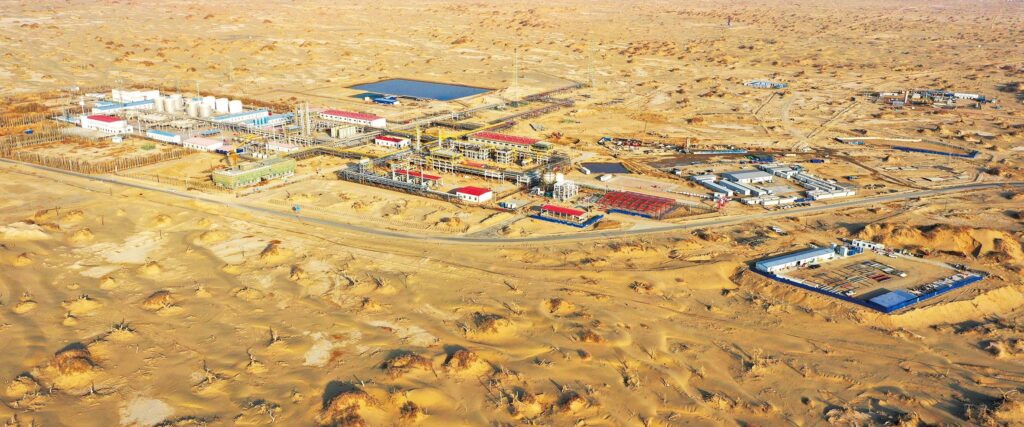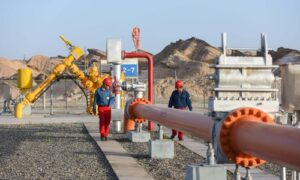In the remote Taklamakan Desert of Xinjiang, China’s Fuman Oilfield has quietly crossed a major milestone—surpassing 20 million tons of cumulative oil and gas output. Touted as China’s largest ultra-deep petroleum reserve, Fuman exemplifies the country’s growing technical capabilities in extracting energy from depths of 7,000 to 10,000 meters—some of the most extreme drilling conditions on Earth.
Ultra-Deep Ambition with Global Implications
Discovered through exploratory drilling in the early 2010s and developed since 2016, the field began production in 2018. It now represents a strategic pillar of China’s energy policy, housing an estimated 1 billion tons of recoverable oil and gas resources. Operated by PetroChina, the field has benefited from substantial investments in bespoke drilling technologies, including high-resilience fluids and equipment designed for high-temperature, high-pressure conditions.
More than an energy asset, Fuman is integral to Beijing’s broader “dual circulation” economic strategy, aimed at reducing dependence on foreign energy. With China still importing over 70% of its oil, ultra-deep domestic production is framed as a national security priority. The technologies pioneered at Fuman are also being marketed as exportable innovations for Belt and Road partner countries, including those in Central Asia and the Middle East.
Strategically, Fuman strengthens China’s bargaining position with traditional energy suppliers and opens new opportunities for energy diplomacy. It also raises implications for regional players like India, which competes for similar overseas energy access. China’s growing self-sufficiency may re calibrate global market dynamics and shift geopolitical leverage in contested energy zones.
The project is now entering an expansion phase. Chinese state media report plans to significantly boost annual output by 2027 and develop new platforms capable of reaching nearly 11,000 meters. Environmental safeguards particularly around water use in the fragile desert ecosystem are also reportedly being upgraded. Though details remain sparse, and independent environmental assessments are notably absent.
Fuman underscores China’s shift from being a technology adopter to a potential leader in energy innovation. As ultra-deep resource development accelerates, they raise not just technical and economic questions, but also strategic ones. Who benefits from these breakthroughs? Who bears the risks? And how might this quiet desert achievement reshape power dynamics far beyond China’s borders?


